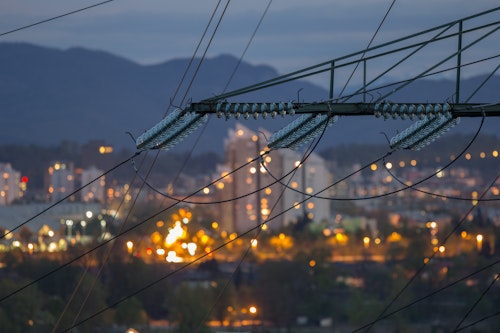Hearing Idea: The Need for “Flexible Base” Resources on the Grid

Driven by low costs and state portfolio mandates, intermittent generation from wind and solar is predicted to make a larger contribution to total generating capacity in the next ten to twenty years. For example, both California and New York have recently set state mandates to obtain 50% of electric power generation from renewable resources by 2030.1 This is great news for climate progress, but introduces new challenges in grid management. Achieving increasing contributions from intermittent sources will require a more flexible electricity system.
Flexible generation is typically provided by dispatchable natural gas generators, but in the future, natural gas generation may not be compatible with low-carbon policies. Demand-side management including demand response, energy efficiency, and storage will make an important contribution towards grid flexibility. But some research suggests that using low-carbon generation resources that are dispatchable and capable of ramping, sometimes described as “flexible base” resources, could be more cost-effective and energy efficient in some cases.2
Though they don’t currently do so, existing nuclear units are technically capable of ramping generation up and down. Preliminary research indicates that there may be more economic incentive to operate flexibly at higher penetrations of wind and solar.3 Some advanced nuclear reactor designs are even better suited to flexible operation than today’s models.4
Another option for providing flexibility and efficiency to the grid is through the creation of hybrid systems that coordinate multiple clean energy sources to meet thermal and electrical needs. By coupling nuclear and renewable energy sources with industrial and storage applications, energy can be directed where it is needed when it is needed maximizing utilization of all resources and improving economics. For example, when there is a shortage of electricity available from wind and solar resources, electricity from nuclear energy can be available to balance the grid supply. When there is excess generation on the grid, electrical or thermal energy from nuclear can be directed to industrial applications.5
Possible witnesses:
- Jesse Jenkins, Energy Systems Researcher at the Massachusetts Institute of Technology (studies optimal configurations of low-carbon energy systems, including those with flexible nuclear resources)
- Chris Colbert, Chief Strategy Officer at NuScale
- Shannon Bragg-Sitton, Senior Nuclear Engineer at Idaho National Laboratory (leads research on Nuclear-Renewable Hybrid Energy Systems)
- Anda Ray, Vice President at the Electric Power Research Institute
Endnotes
California Environmental Protection Agency, Air Resources Board, “California’s 2030 Climate Commitment: Renewable Resources for Half of the State’s Electricity by 2030,” Fact Sheet. Accessed February 13, 2017. Available at: https://www.arb.ca.gov/html/fact_sheets/2030_renewables.pdf; See also “Governor Cuomo Announces Establishment of Clean Energy Standard that Mandates 50 Percent Renewables by 2030,” Press Release, The Office of Governor Andrew Cuomo. Accessed February 13, 2017. Available at: https://www.governor.ny.gov/news/governor-cuomo-announces-establishment-clean-energy-standard-mandates-50-percent-renewables.
Fernando Sisternes, Jesse Jenkins, and Audun Botterud, “The value of energy storage in decarbonizing the electricity sector,” January 14, 2016. Applied Energy.
Peter Maloney, “How Market Forces Are Pushing Utilities to Operate Nuclear Plants More Flexibly,” Utility Dive, Accessed February 1, 2017. Available at: http://www.utilitydive.com/news/how-market-forces-are-pushing-utilities-to-operate-nuclear-plants-more-flex/427496/.
Dan Ingersoll, Chris Colbert, et al.., “Can Renewables and Nuclear Be Friends?”, May 2015, NuScale Power, Accessed February 1, 2017. Available at: http://www.nuscalepower.com/images/our_technology/nuscale-integration-with-renewables_icapp15.pdf.
Bragg-Sitton, S., Boardman, R., Ruth, M., Zinaman, O., Forsberg, C., “Rethinking the Future Grid: Integrated Nuclear-Renewable Energy Systems, in proceedings of the 9th Nuclear Plants Current Issues Symposium: Moving Forward, Charlotte, NC, December 7-10, 2014, pp. VII B-2/1-11. Available at: https://www.osti.gov/scitech/biblio/1177627-rethinking-future-grid-integrated-nuclear-renewable-energy-systems.
Subscribe
Get updates whenever new content is added. We'll never share your email with anyone.
